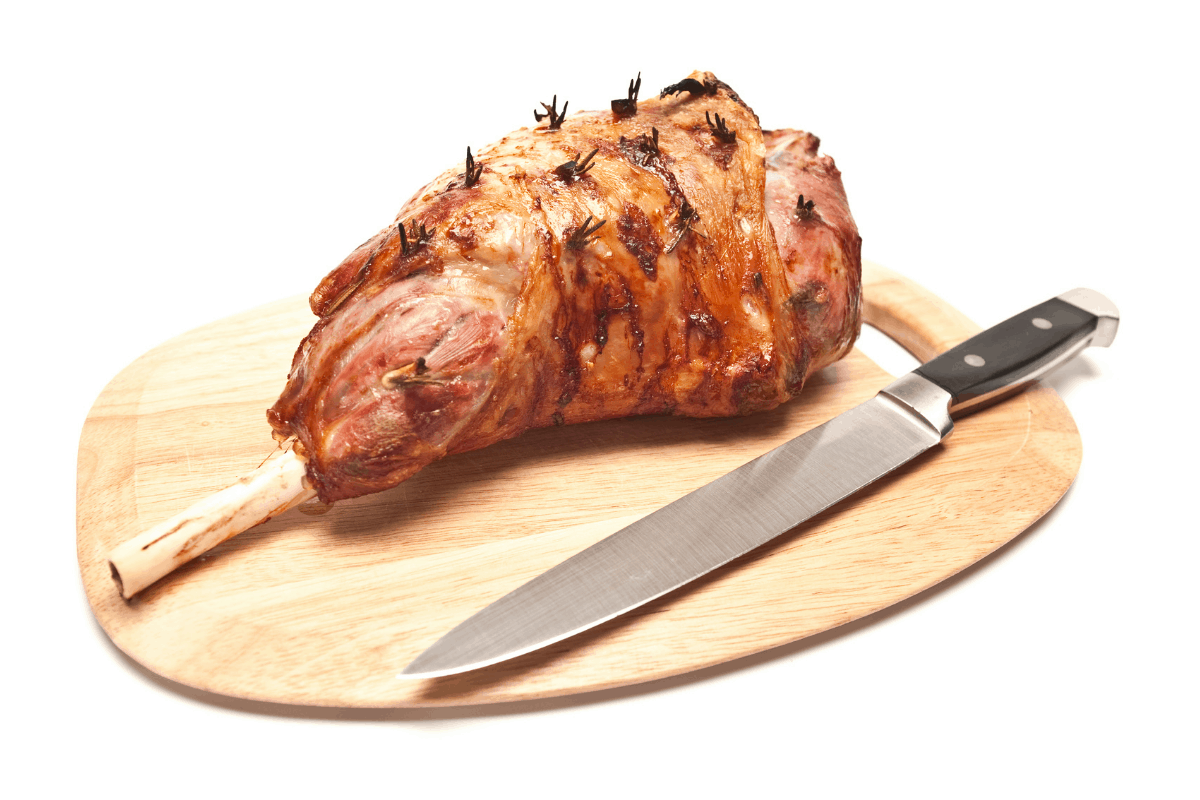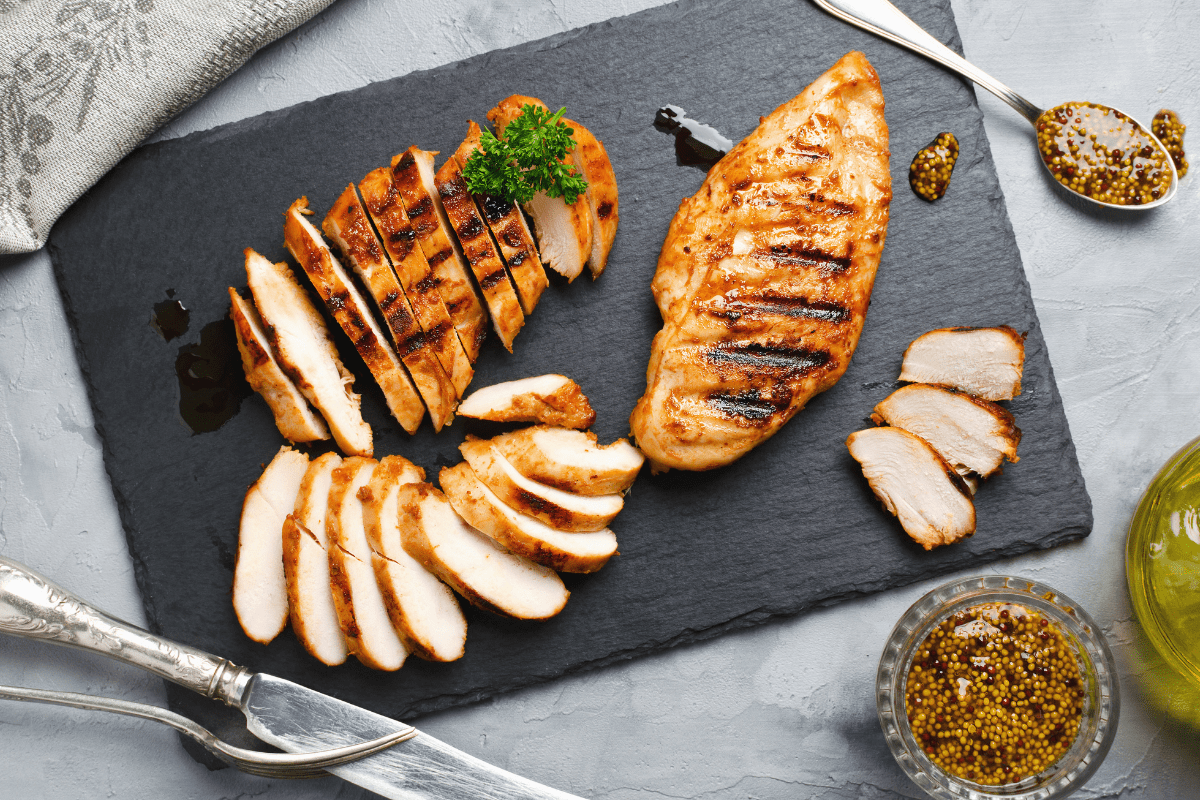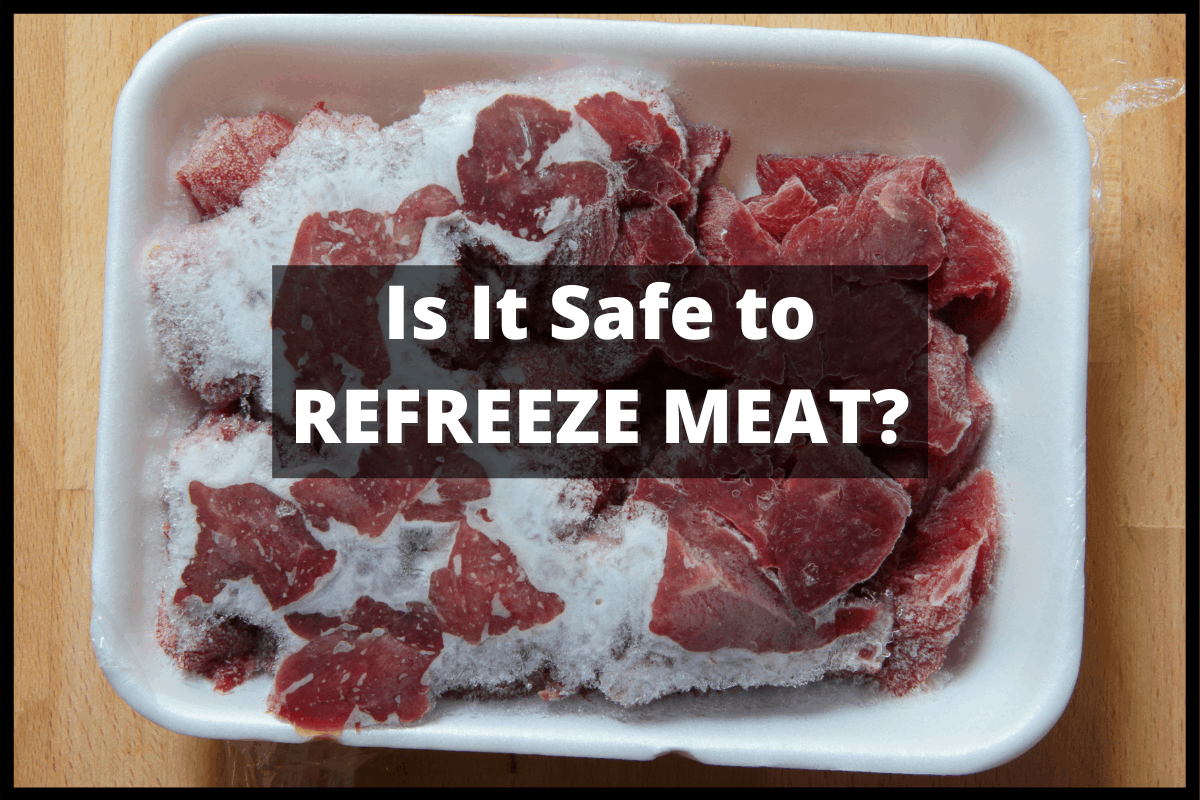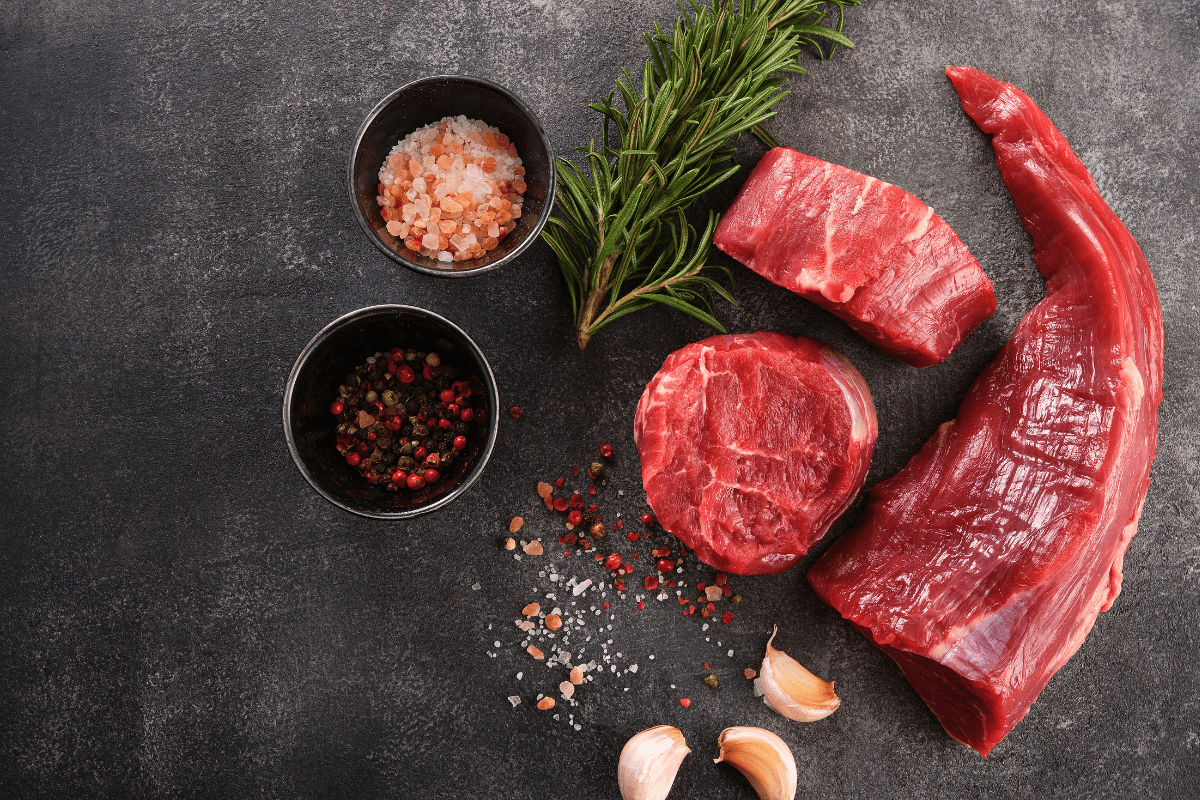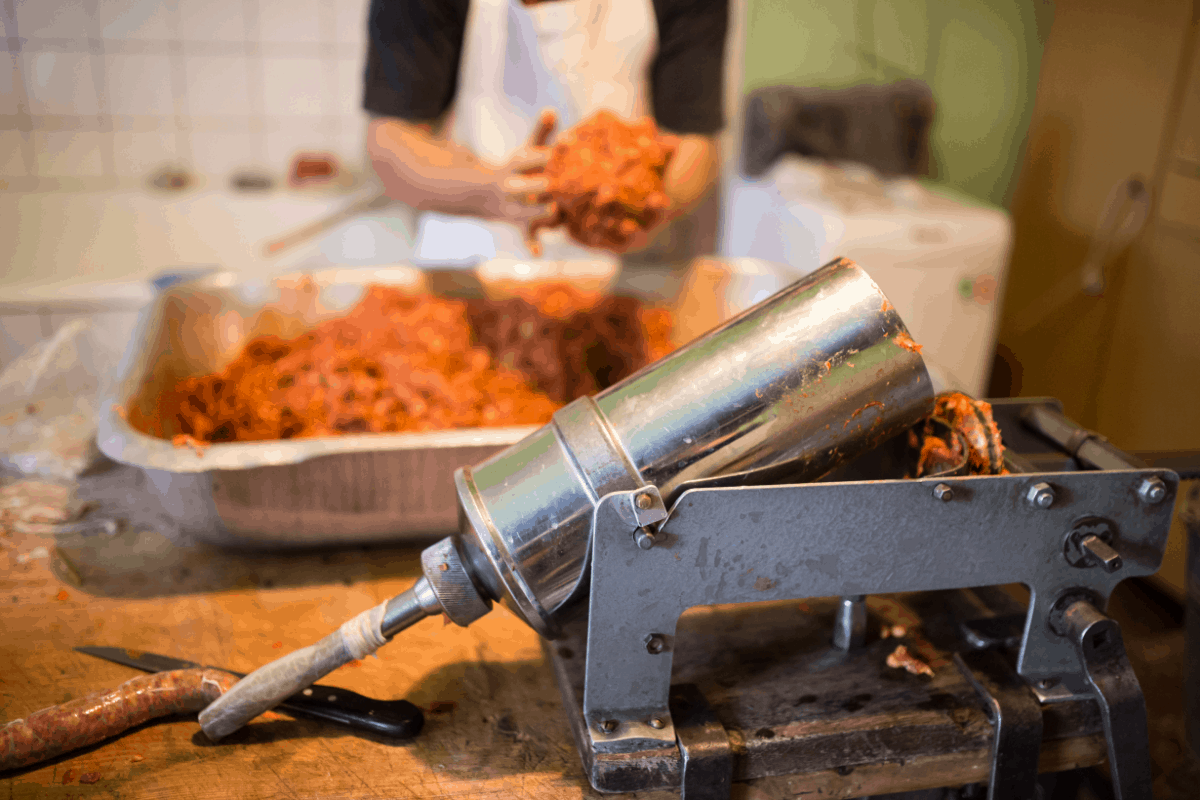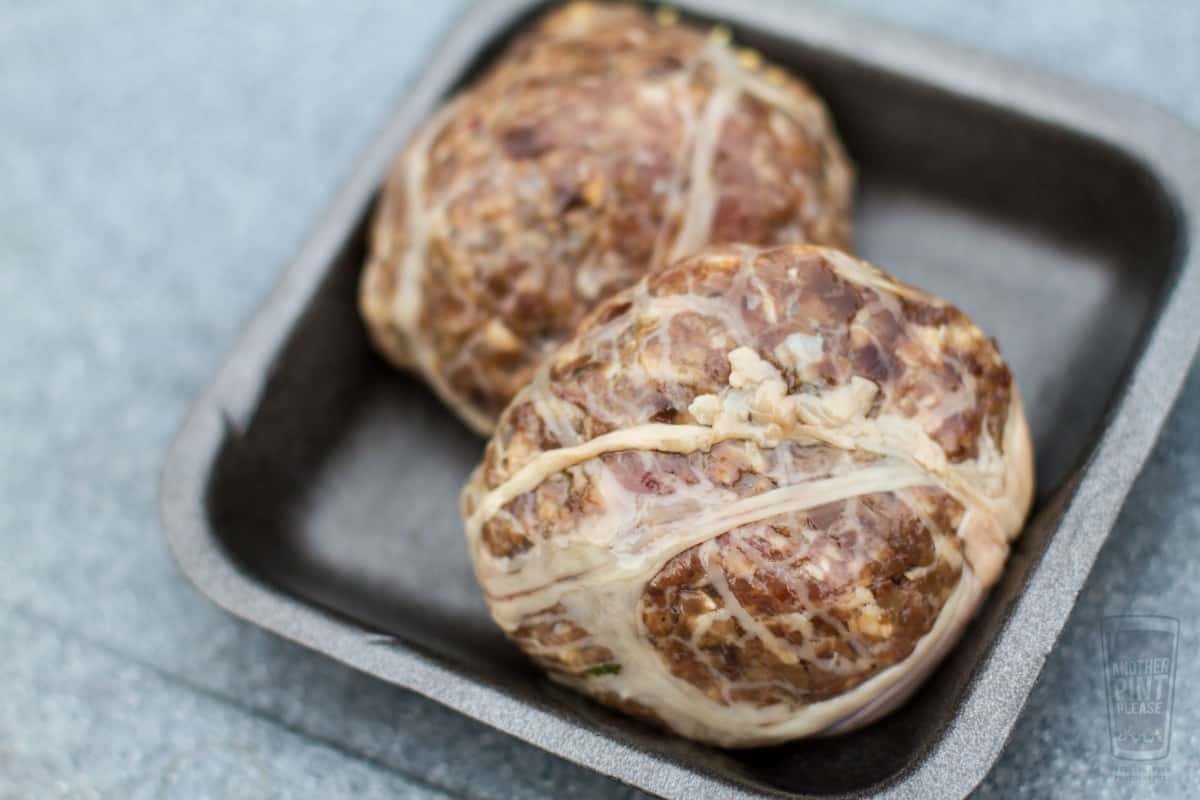When it comes to removing the bones from a piece of meat, there are generally two ways that it can be done.
Tunnel boning and butterfly boning.
So what is the difference between tunnel boning and butterfly boning meat? Tunnel boning is the removal of bones by cutting into the flesh of the meat as little as possible, thereby retaining the overall shape and structure of the meat. Butterfly boning involves cutting apart the muscles of the meat, exposing the bone for removal, and then further cutting the flesh to create an even thickness of meat.
We will now look further into when and why, you may use one method of boning meat over the other.
For the purposes of this article, we will use a Leg of Lamb as the cut of meat to be boned. This is probably the most common cut of meat that will use both these methods of boning, however they can be used on almost any kind of meat you like.
This post may contain affiliate links to recommended products that may result in us receiving a small commission on qualifying purchases at no extra cost to you!
What Does Tunnel Boning Meat Mean?
When a recipe calls for a piece of meat to be tunnel boned, it requires the bones to be removed with as little ‘damage’ to the meat surrounding the bone as possible.
It is called ‘tunnel’ boning, as when the bone has been removed, there will just be a little tunnel through the meat where the bone sat in place.
Due to the minimal cutting of the meat when removing the bones, the cut of meat will retain it’s original shape and structure, even though the bones have been taken out. Essentially, just by looking at it, it would not be visually noticeable that the bones had been removed.
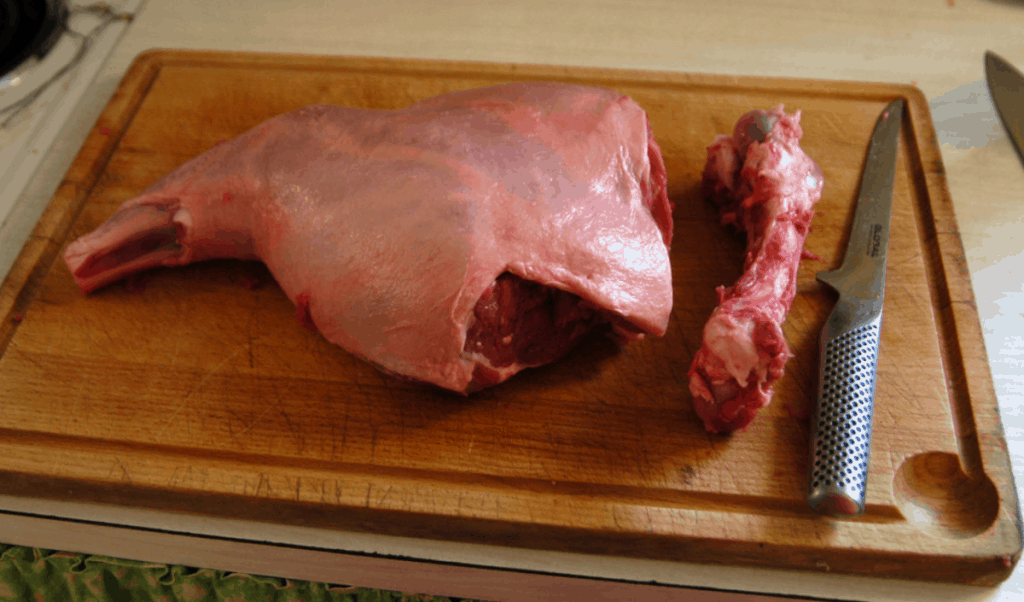
How do you tunnel bone a piece of meat?
Tunnel boning requires more skill and patience than butterfly boning. Essentially you are trying to remove the bone without actually being able to see the bone very clearly.
Using the tip of a sharp boning knife, you will carefully expose each end of the bone you wish to remove. Once you can see the end of the bone, you will gently run the tip of the knife down the bone, cutting around the bone as you go.
Only small incisions will be made, just big enough for you to expose a little more of the bone, as you go down the length towards the middle of the bone.
Once you have cut and exposed half of the bone, you will repeat the same process from the other exposed end. Eventually, you will meet in the middle, and the bone can be removed from the tunnel you have created around the bone.
All your cuts need to be small and as close to the bone as possible, just big enough for you to separate the meat from the bone, enough to slide it out.
Although this is a little tricky and fiddly, it does become easier as you get to know the shape of the bones, and how deep you need to cut to release it.
Here is a video of a leg of lamb being tunnel boned.
The advantages of Tunnel Boning Meat
- Cleaner & More Professional
- Creates Perfect Pocket for Stuffing or Adding Herbs
- Retains the overall shape of the original meat
- Allows for Easy Carve roasts.
More Professional End Product
A main advantage of tunnel boning, is that the cut of meat retains it’s shape, and there is little damage to the muscles of the meat. This means that if you are looking to serve the meat as a centrepiece to carve at the table, the meat looks like it is supposed to look.
Secure Stuffing Pocket
The ‘tunnel’ space left through the meat where the bone was situated is perfect for filling with stuffing or fresh herbs.
Due to the enclosed nature of the ‘tunnel’, whatever you fill the hole with will remain in place during the cooking process. Sometimes when these things are added to a tied butterflied meat, the stuffing can escape through the cuts created. This is not an issue with the tunnel boned method.
Easy Carving
As mentioned before, when you tunnel bone a piece of meat, the original shape is retained. You will often see and ‘Easy Carve’ leg of lamb on sale where the shank bone is still intact, however the central leg bone has been removed. When prepared this way, carving is a breeze. Standing at the dinner table and carving the perfect slices of meat for your guests will be a pleasure, not a chore!

What Does Butterfly Boning Mean?
Butterfly boning meat involves cutting through the exterior muscles of the meat to expose the bone for easy removal. This method can also be referred to as ‘Slash’ boning.
Unlike tunnel boning, once the bone has been removed using the butterfly method, the meat will need to tied back together with twine if you want it to resemble the original shape.
Alternatively, you can continue to cut open the muscles of the meat until it is all an even thickness, for faster cooking either in the oven or on the BBQ grill.
How to you Butterfly Bone a Piece of Meat
Butterfly boning meat is a quicker and simpler method than tunnel boning due to exposing the bone and seeing where you need to cut. Essentially, you are just cutting through the meat flesh to expose the bone, and then cutting around the bone to remove it.
There are 2 methods of butterfly boning meat – Slashing and Seaming!
Seaming
If you are going to tie the meat back together to resemble the original cut of meat, then seaming will be a cleaner way of removing the bones.
Taking the tip of the knife, you will follow the natural seams of the meat, separating them until you can see the bone. You will then guide your knife along the bone and remove it.
Slashing!
This is a ‘cruder’ way of removing the bone as it requires much less skill than tunnel or seaming.
Using a sharp boning knife, starting at the exposed end of the bone, you cut along the length of the bone, cutting through the flesh and muscles of the meat as you go. You continue to cut around the bone until it is easily removed.
The final result will be a flatter cut of meat with potentially many gouges into the flesh of the meat (not always pretty!).
FUN FACT! Skilled butchers will sometimes refer to production line butchers as ‘Slashers or Slash Butchers’ if they only know how to bone meat using the butterfly method!
Here is a video of a leg of lamb being butterfly boned.
Advantages of Butterfly Boning Meat
- Easiest method for removing the bone
- Can stuff and roll to feed more people
- best method if cutting into smaller pieces
- reduces cooking time and allows even cooking
- perfect for fast cooking on a BBQ grill
- Perfect for marinating or adding seasoning
Easy for beginners!
Due to the exposing of the full length of the bone, butterfly boning is probably the safest and easiest method for beginners to attempt.
Once you get used to how the boning knife handles, and get familiar with the shape of the bones, it will be easier for you to then attempt the tunnel boning method that can be more challenging.
Meat goes Further
When you butterfly the meat out fully, it is possible to add quite a lot if stuffing before rolling back up and tying as a roast. This not only allows for the flavors in the stuffing to help season the meat, but the added stuffing will allow the meat to serve more people when you have a big crowd and need the meat to go further.
Better for Kebobs, Stews, Stir Frys
If you are making a recipe that calls for the boneless meat to be cut up smaller, then it is quicker and easier to remove the bones using the butterfly method. It will not matter how much you cut into the flesh to expose the bone as you will be cutting the meat further anyway.
Faster Cooking Time
If you are short of time, butterflying the meat to make it a more even and flatter cut, will drastically reduce the time needed to cook the meat. This is also perfect for those wishing to cook the meat on an outside grill or smoker.
Better for Marinates or Seasoning
By butterflying the meat out, you are creating a wider surface area and therefore more of the meat will be exposed to the marinate or seasoning that you are planning to use. This is a time where you can be forgiven for all the extra cuts you may have accidently created when boning the meat, as they will now be places that the marinate can reach to further flavor the meat.
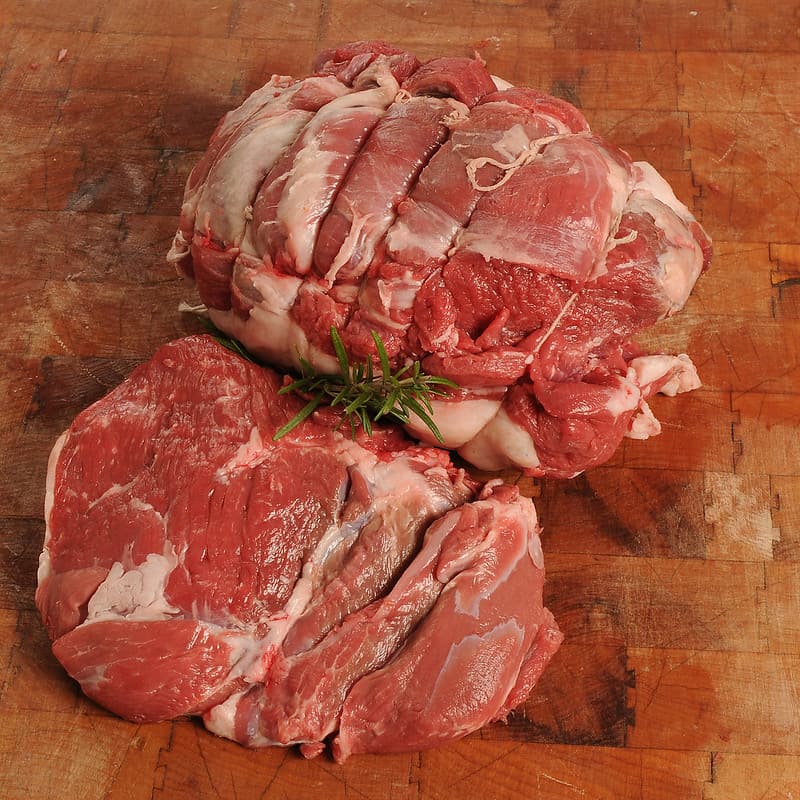
Boning Tips For Using Either Method
Space
When attempting to bone out a piece of meat, you want to ensure that you have space around you to move freely. If you are trying to do it in a small area, and do not have the space required to move you arms as needed, then you risk cutting yourself.
Knife
Ideally you will own a sharp boning knife for this job. Alternatively, a similar thinner bladed kitchen knife would work provided it is also sharp.
You are far more likely to injure yourself trying to force a blunt knife to cut than you are with a sharp blade.
If you are not confident in knife sharpening, then this simple and cheap knife sharpener will help you keep your knives in good cutting condition.
If you have a steel, it will help to keep a cutting edge on the knife for longer and reduce the ned for sharpening as often.
Cutting Board
Having a sturdy cutting board will help you to keep the meat in place as you are working on it. Kitchen surfaces can sometimes cause the meat to slide around which will raise the chances of you injuring yourself.
Kitchen Tip! Place a damp cloth under your cutting board to stop it slipping on your worktops.
Patience
Relax and take your time.
If this is your first attempt at boning a piece of meat, it may be a little daunting, and may take longer than you think – that’s OK!
Try to relax and have confidence with using the knife, and take all the time you need. Rushing will increase the chances of cutting yourself.
Keep your non cutting hand out of the way of the knife blade, and to begin with, put the knife down after each cut.
Look at where you have just cut and decide where the next cut should be before picking the knife up again. By doing this, you are less likely to make unnecessary cuts, and can start to get a feel for the knife and the shape of the bone.
As you become more confident, you will not need to put the knife down as much and will begin to know where to instinctively cut.
Enjoy!
You are obviously doing this because it is something you want to try (otherwise have your butcher remove the bone for you!)
Try to enjoy the process as you go along.
Take pride in the new skills you are learning and the satisfaction of knowing how to prepare the meat you are serving.
The meat will taste all the sweeter knowing that you have taken such care to prepare it.
Well done you for having a go!
Related Articles!
What Does French Trimmed Meat Mean
Why Is Rack of Lamb So Expensive?
Index of All Our Articles

